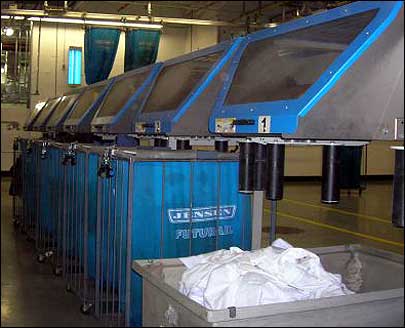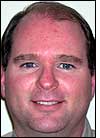Nov 28, 2007Canadian Linen and Uniform Service, an 82-year-old Toronto-based firm that sells, rents and launders 400,000 linens and work garments to its more than 80,000 customers across a variety of industries, is no stranger to RFID.
Ten years ago, the company began employing low-frequency (LF) passive RFID transponders made by Swiss firm DataMars to track the lifecycle of the garments and linens it rents and leases to its customers. This year, timed with the consolidation of two of its laundering facilities into a single location, Canadian Linen escalated its use of RFID technology by replacing the manual sortation of soiled items with an RFID-enabled automated system.

The move to automatic sortation has led to a 17 percent labor savings, and allowed the company to increase the capacity of its laundering system by 50 percent, according to Dave Sweeney, Canadian Linen's operations manager, speaking at this week's RFID Journal LIVE! Canada 2007 conference in Toronto.
Previously, employees handled each soiled item individually, passing the DataMars T-BH7550-S tag sewn into its fabric over a fixed-position RFID reader, then tossing the item into a bin, based on its type (shirts into one bin, pants into another and so forth). Now, Sweeney says, the garments are placed on a conveyor belt containing 3,000 built-in "pockets," one item per pocket. Each item's tag is read as the conveyor passes it through a read zone. This data is sent to back-end software, which identifies the garment, based on its tag ID, then sends a command to a conveyor to drop the item into the appropriate bin.
According to Sweeney, consolidating facilities into a single location presented Canadian Linen with an incentive to upgrade its laundry sortation system. Sweeney declines to provide a specific date by which the company expects to see a return on its investment in the nearly year-old system, but notes that Canadian Linen does not usually invest in projects unless they promise a return within two years or less.
The company's existing RFID-based lifecycle-tracking system provides Canadian Linen and Uniform Service visibility into the history of each garment, including when—and to whom—it was assigned, as well as how often it's been washed or mended, and its location at any given point during servicing. Over the past decade, Sweeney said, this has enabled the firm to eliminate errors in its orders and inventory counts, which also improved customer service.
While many of the company's competitors migrated from human-readable tags to bar codes years ago, Sweeney said, Canadian Linen never employed bar codes. "For our competitors who use bar codes," he notes, "if they wanted to begin using RFID instead of bar codes, they would need to operate two separate systems for a while."
Eventually, Canadian Linen is interested in looking into migrating to a high-frequency (HF) RFID system able to read the tags of linens and garments in bulk. It is also considering a system for reading the tags at its customers' facilities, when used goods are being picked up.


